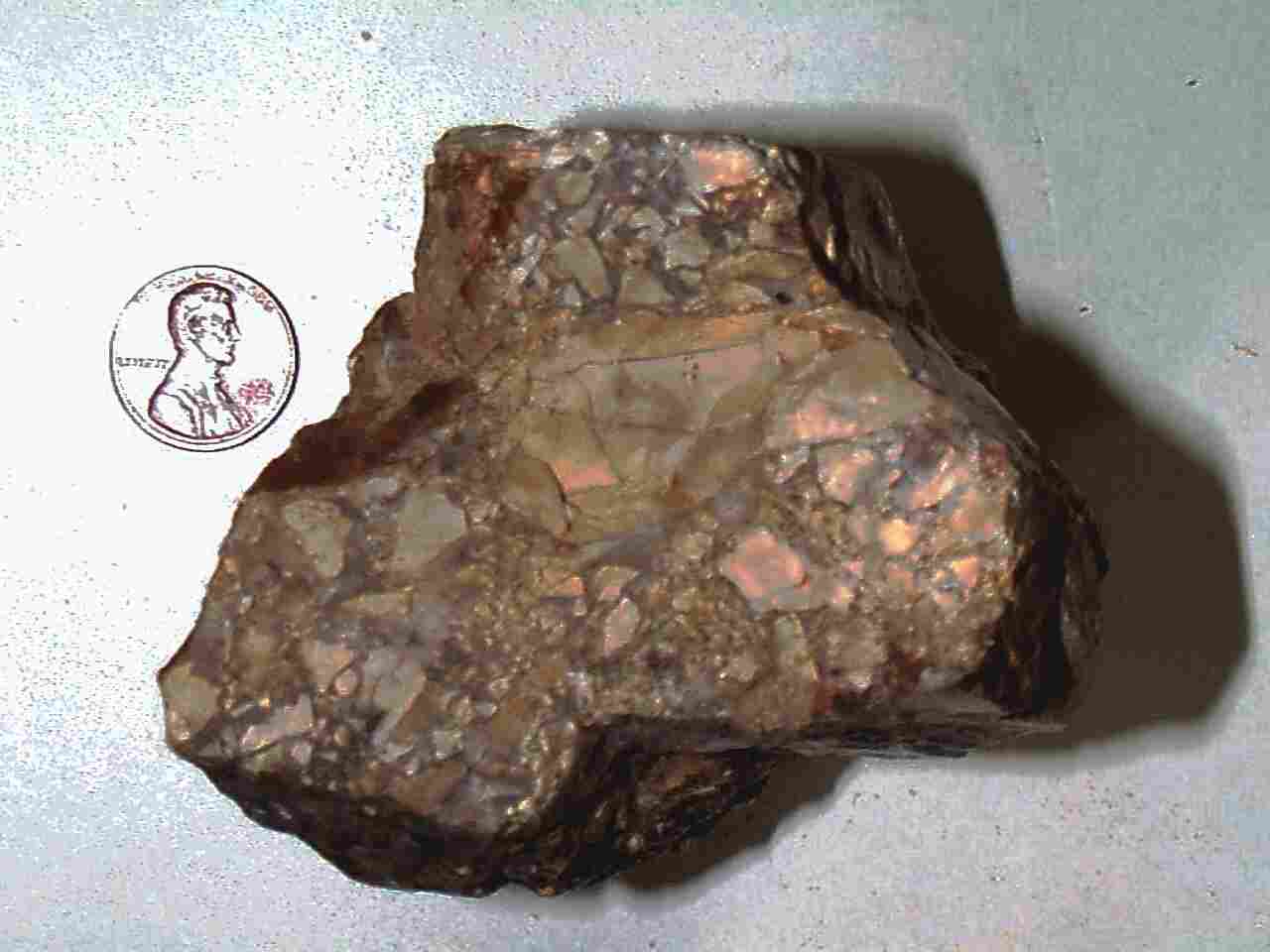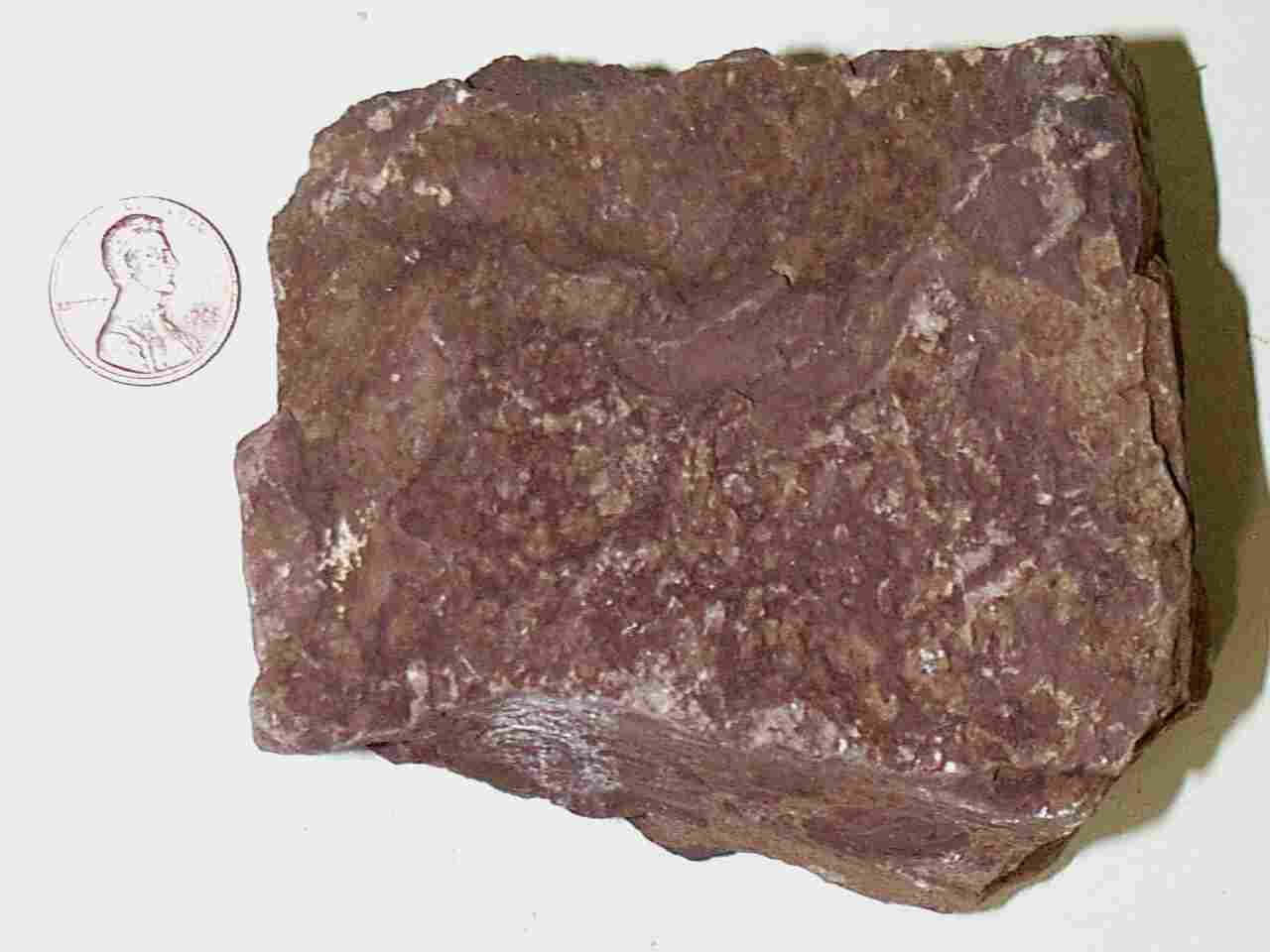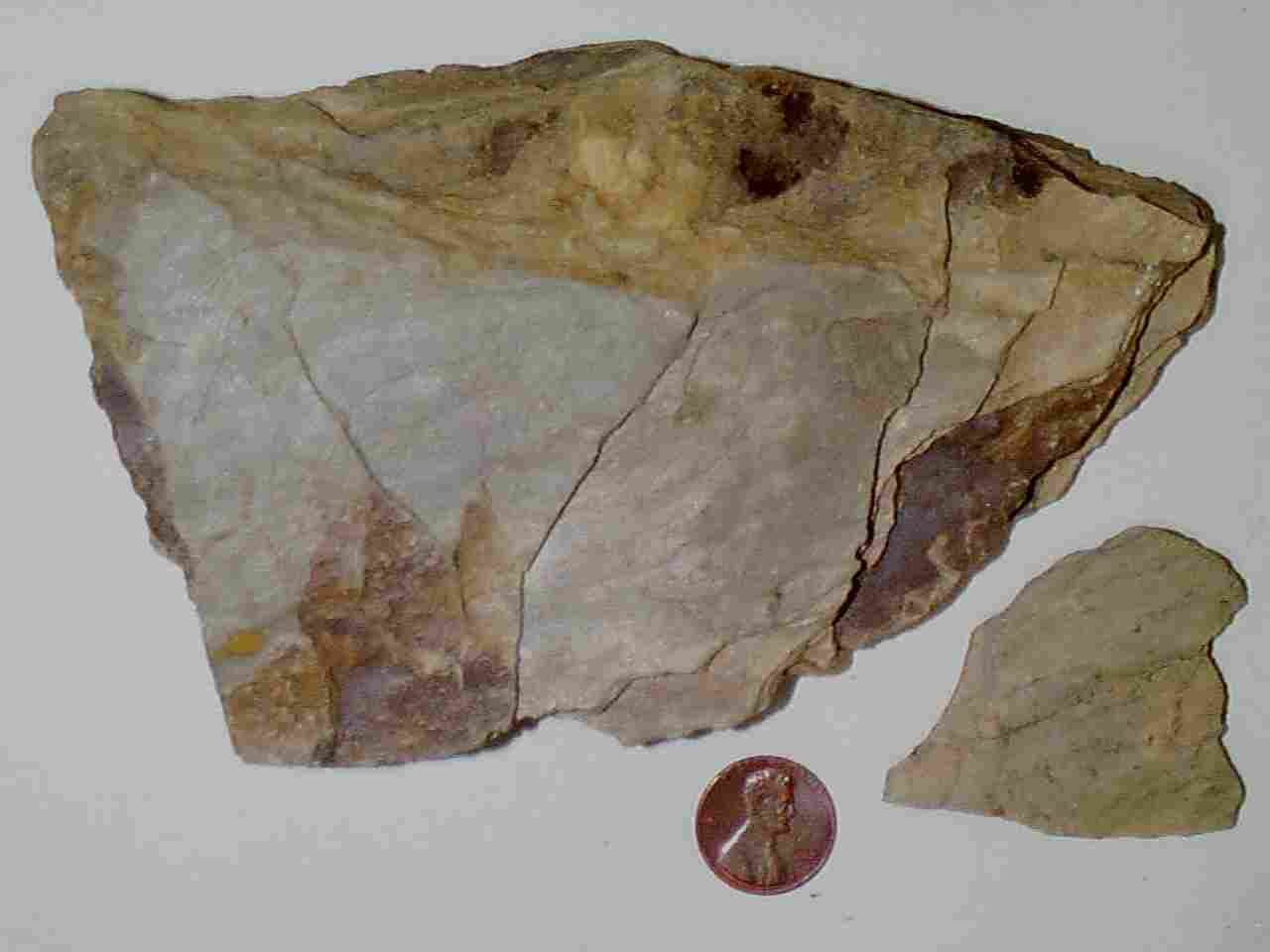Classification of Clastic (Detrital) Sedimentary Rocks
| Grain Size |
|---|
| Gravel (>2mm) |
Sand (2 to 1/16 mm) |
Silt/Clay (< 1/16 mm) |
|---|
| Rock Name | Conglomerate/Breccia* | Sandstone | Mudstone/Shale** |
|---|
*Note: Conglomerate is recognized by its rounded and subrounded gravel clasts;whereas, breccia is characterized by angular gravel clasts.
**Note: Shale is a fine-grained mudstone that breaks into thin sheets parallel to original bedding planes.

CONGLOMERATE

Conglomerates are clastic (detrital) sedimentary rocks which contain gravel-size, rounded to subrounded clasts. The large clast size indicates either high-energy deposition or transport by a viscous (thick) medium such as glacial ice.
Sediment Type: clastic
Grain Size: gravel
Common Sedimentary Environments: river channels, glacial till, alluvial fans
Other Characteristics: clasts are rounded to subrounded indicating transport and abrasion before deposition

BRECCIA

Breccias are clastic (detrital) sedimentary rocks composed of angular gravel-size clasts. These rocks commonly form along near-surface faults. The angular shape of the clasts indicates little or no transport before deposition.
Sediment type: clastic
Grain Size: gravel
Common Sedimentary Environments: near-surface faults or near sediment source areas
Other Characteristics: differentiated from conglomerate by the angular shape of the clasts

SANDSTONE

Sandstones are commonly quartz-rich clastic rocks formed in medium-energy environments. Weathering usually dissolves soluble minerals and forms clays from feldspars and other silicates; whereas, the high hardness and absence of cleavage of quartz results in greater stability and rounding during weathering and transport.
Sediment type: clastic
Grain Size: sand
Common Sedimentary Environments: beach, desert
Other Characteristics: quartz is a common clast composition due to its high hardness and lack of cleavage

MUDSTONE

Mudstone is a fine-grained clastic sedimentary rock formed by the accumulation and consolidation of silt and clay. The clastic material forms by the weathering and breakdown of silicates to mostly clay and silt-size quartz. The small clast size (mud) commonly reflects low-energy environments of deposition.
Sediment type: clastic
Grain Size: silt and clay (mud)
Common Sedimentary Environments: low energy environments such as lakes, deep ocean, flood plains, and deltas
Other Characteristics: commonly red, brown or black in color depending on the amount of organics and iron oxides

SHALE

Shale is a fine-grained mudstone which breaks into thin parallel sheets associated with original bedding. Shale also forms in low-energy environments such as lakes and deep marine areas.
Sediment type: clastic
Grain Size: silt and clay (mud)
Common Sedimentary Environments: low energy environments such as lakes, deep ocean, flood plains, and deltas.
Other Characteristics: breaks in thin parallel layers parallel to bedding and is softer and less dense than slate

![]()
![]()

![]()
![]()

![]()

![]()

![]()

![]()

![]()